Bio 2025 Term 2 - Set 2
1/19
There's no tags or description
Looks like no tags are added yet.
Name | Mastery | Learn | Test | Matching | Spaced |
|---|
No study sessions yet.
20 Terms
1st Line of Defence - Physical and Chemical Barriers
First line of defence = physical barriers and the immune system defend the body against pathogens
Examples of physical barriers - eyelashes, hairs, stomach lining, esophogus (throat) lining, nose hairs
Non-specific - the purpose of this line of defence is to STOP microbes from entering the body
Physical barrier - the skin and mucous membranes act as a barrier to PREVENT penetration by microbes
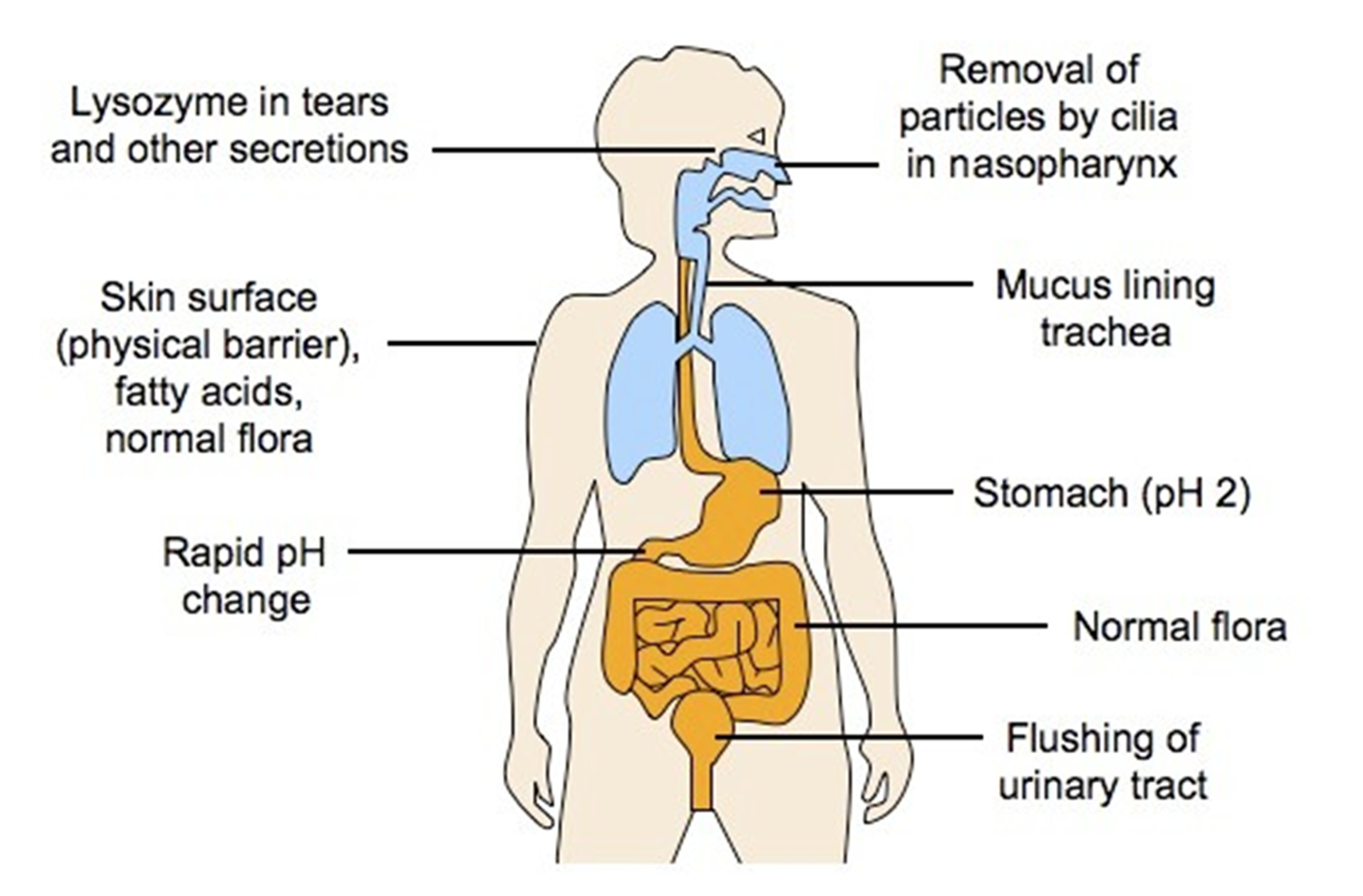
2nd Line of Defence - Inflammation, phagocytosis, fever
If microbes do manage to get inside the body then the second line of defence is activated
This is also non-specific as it stops any type of microbe
This is the line of defence that has attacking cells and molecules which attack pathogens that manage to breach the first line of defence
Innate responses are non-specific in all animals, are fixed responses, and do not created
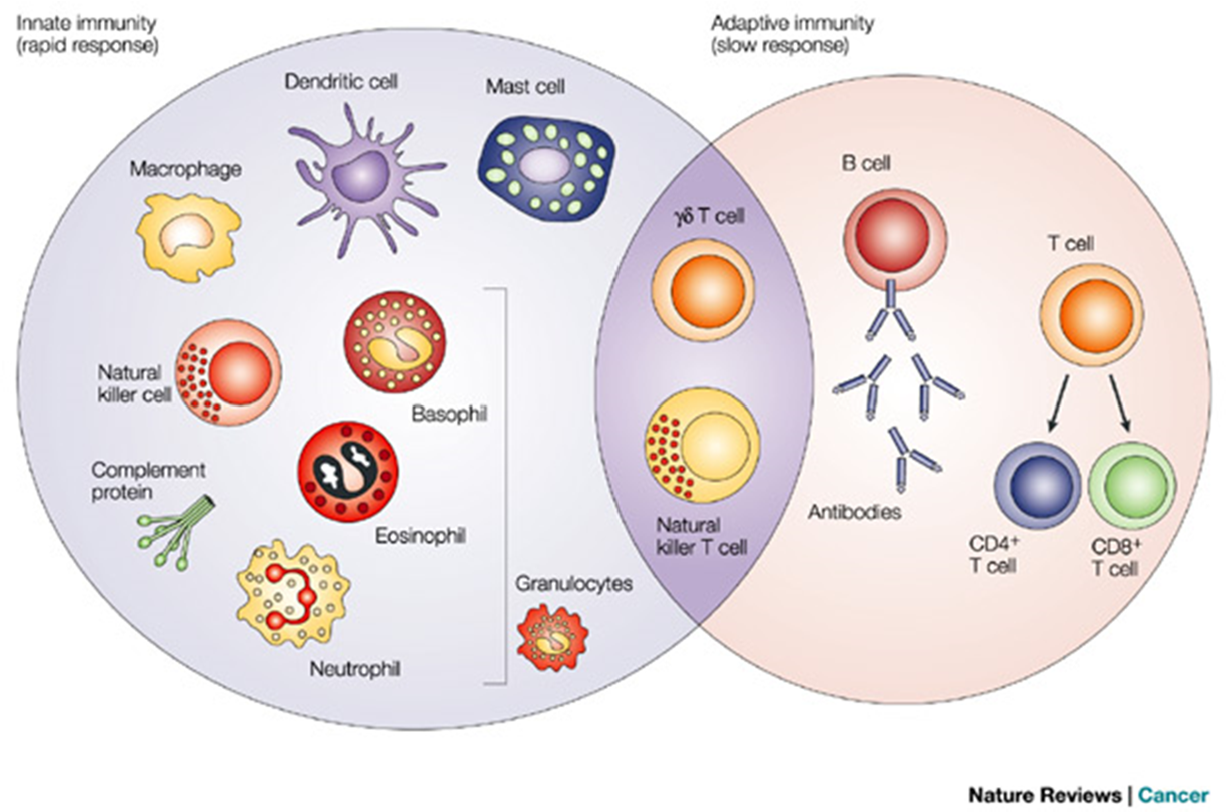
Innate & Adaptive Response
The innate immune response functions as the second line of defence against infection = non-specific
The adaptive immune response is slower to develop, but manifests as increased antigenic specificity and memory. This is the third line of defence = specific

2nd Line of Defence - Inflammation
A pathogen stimulates an increase in blood flow to an infected area
Blood vessels in the area expand - vasodilation
White blood cells leak into the tissue from the vessels to invade the infected tissue
WBC (phagocytes) can then engulf and destroy bacteria
This all causes a red, swollen, painful inflammatory response
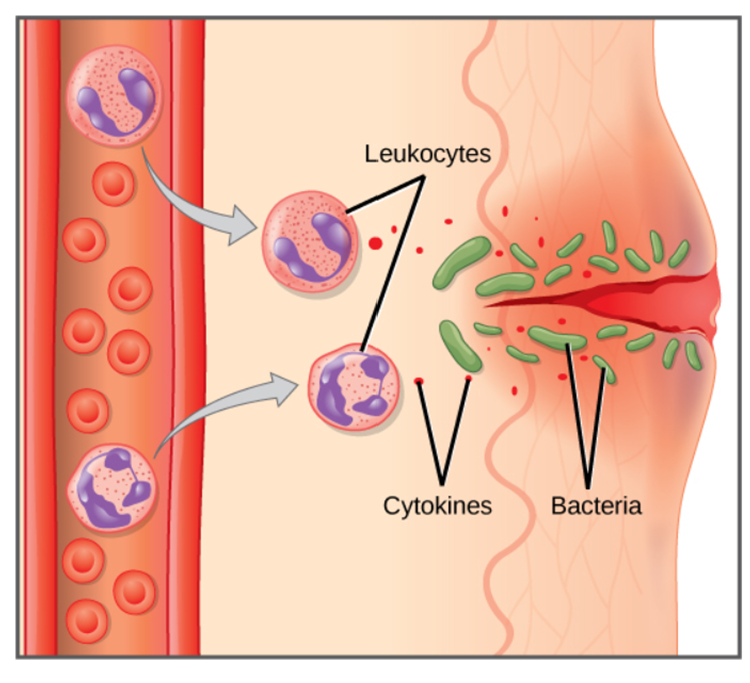
2nd Line of Defence - Fever:
Increased temperatures enhance a variety of immune cells functions
These include phagocytosis and reactive oxygen species production by neutrophils, as well as enhanced function of natural killer cells, T-helper cells and antibody-producing cells
Fever can induce heat-shock proteins in both pathogens and host cells
2nd Line of Defence - Phagocytosis
Is a cellular process for ingesting and eliminating particles larger than 0.5 μm in diameter, including microorganisms, foreign substances, and apoptotic cells
Initial contact occurs between phagocytes and pathogen
Phagocyte engulfs the pathogen
Pathogen is enclosed within the cytoplasm in the phagocyte
A lysosome (filled with hydrolytic enzymes) fuses with the engulfed pathogen
The enzymes digest the pathogen. The digested parts are released
The antigen is presented on the plasma membrane.
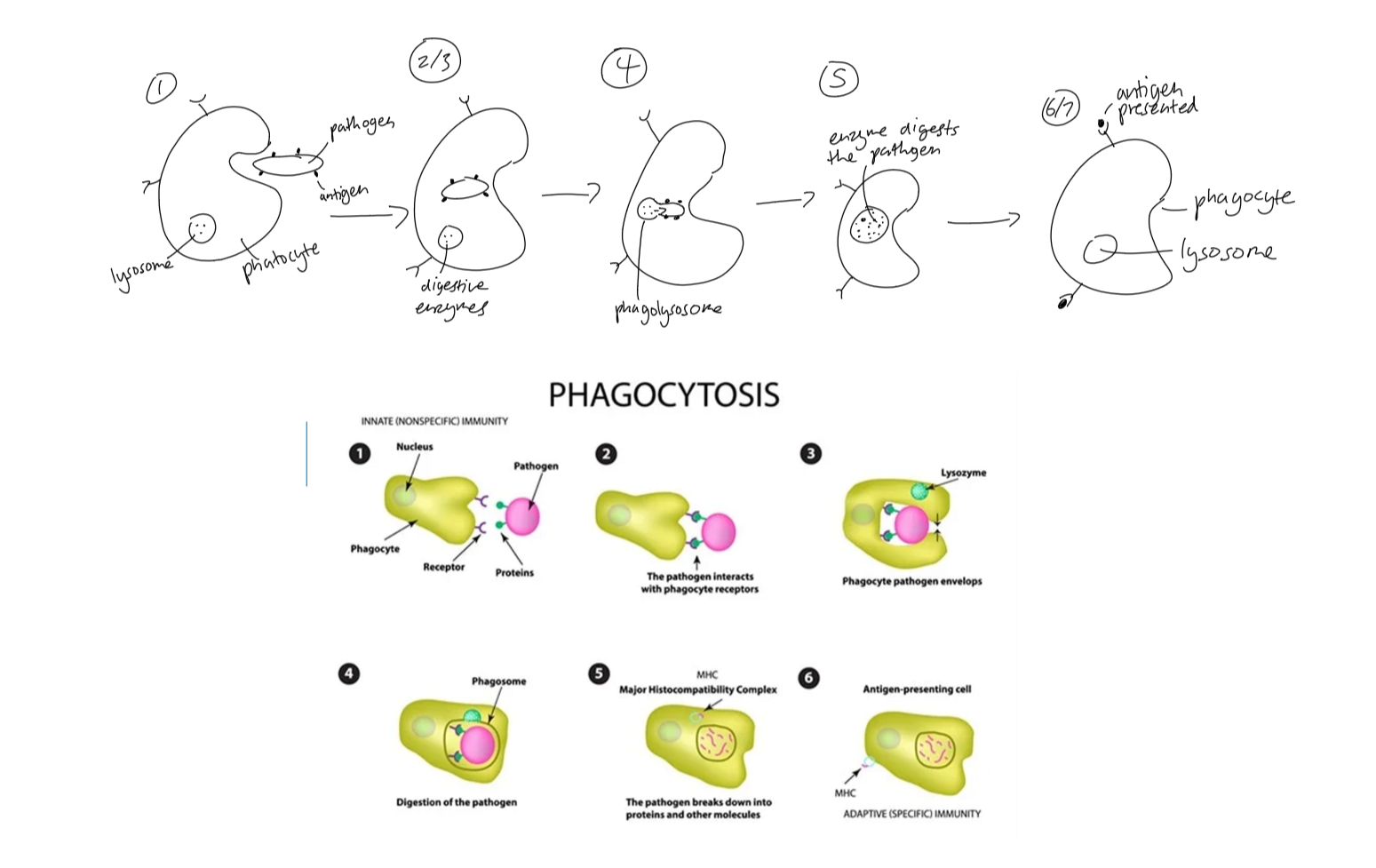
3rd Line of Defence - Specific Immunity
Specific defence processes = the immune responses 'specifically' designed to combat particular microorganisms
Specific Defences:
In specific defences, the immune system forms a chemical "memory" of the invading pathogen
If the pathogen is encountered again, the body reacts so quickly that few or no symptoms are felt
Specific defences are those that give us immunity to certain diseases
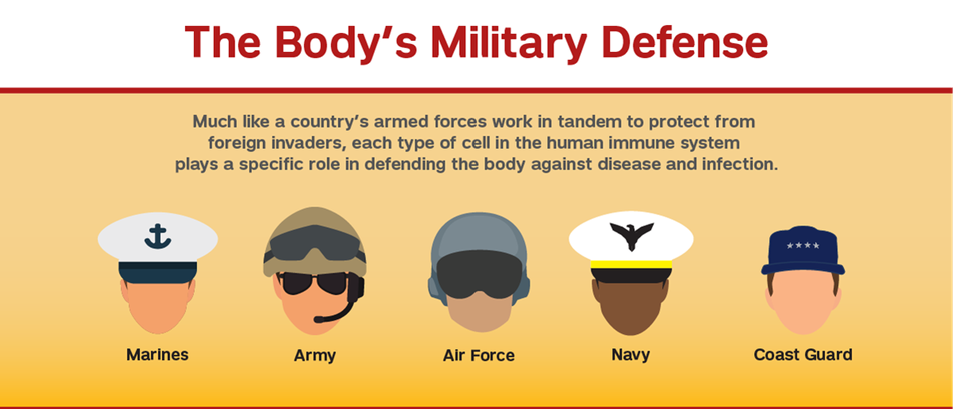
Major Players in the Immune System
Macrophage
T cells (helper, cytotoxic, memory)
B cells (plasma, memory)
Antibodies
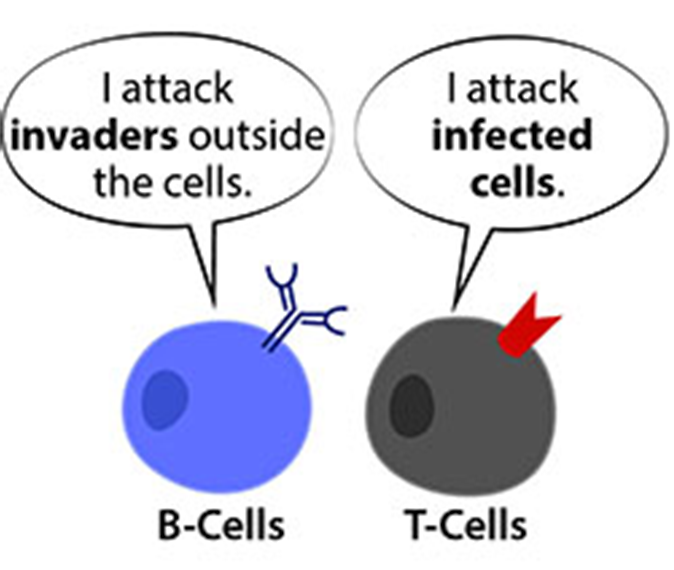
Role of B cells in defending the body
Protect you from infection by making proteins called antibodies
B cells are a type of white blood cell called lymphocytes
When your immune system detects antigens - markers that indicate a threat like a bacteria or virus has entered your body - your B cells produce antibodies to fight the invader
Plays a role in the third line of defence
B cells are produced and mature in the bone marrow
Role of T cells in defending the body
Destroys harmful pathogens and sends signals that help control your immune system's response to threats
T cells are a type of immune cell
T cells are a type of white blood cell
When they sense an infection, they activate other immune cells to fight it
May activate cytotoxic T cells or B cells
Plays a role in the third line of defence
The T cells help identify pathogenic cells and destroy targeted cells
T cells are produced in the thymus
Define antibody, antibiotic, and antigen
Antibody - a protein produced by the human immune system to tag and destroy invasive microbes
Antibiotic - various chemicals produce by certain soil microbes that are toxic to many bacteria. Some we use as medicines
Antigen - any protein that our immune system uses to recognise "self" vs "not self"
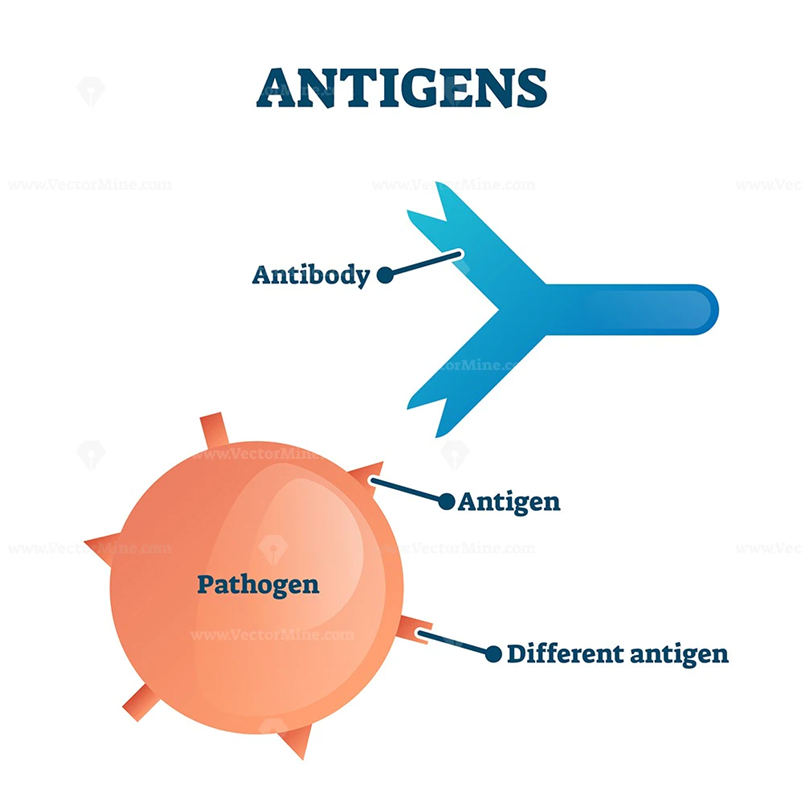
Process(?)
Humoral immunity produced antigen specific antibodies and is primarily driven by B cells
Cell-mediated immunity on the other hand does not depend on antibodies for its adaptive immune functions and is primarily driven by mature T cells, macrophages and the release of cytokines in response to an antigen
Macrophage is a type of blood cell
Cytokine - chemical messengers
Plasma cells help by producing antibodies rapidly
Memory B cells remember what has come into the body for the future
Cytotoxic T cell doesn't need anything other than itself
Destroys the infected cell

B cells
B-cells in general produce antibodies
Those with antibodies bind with the invader’s antigen
B-cells differentiate into either plasma cells or memory B-cells
Plasma cells rapidly produce antibodies
Memory cells retain the “memory” of the invader and remain ready to divide rapidly if an invasion occurs again
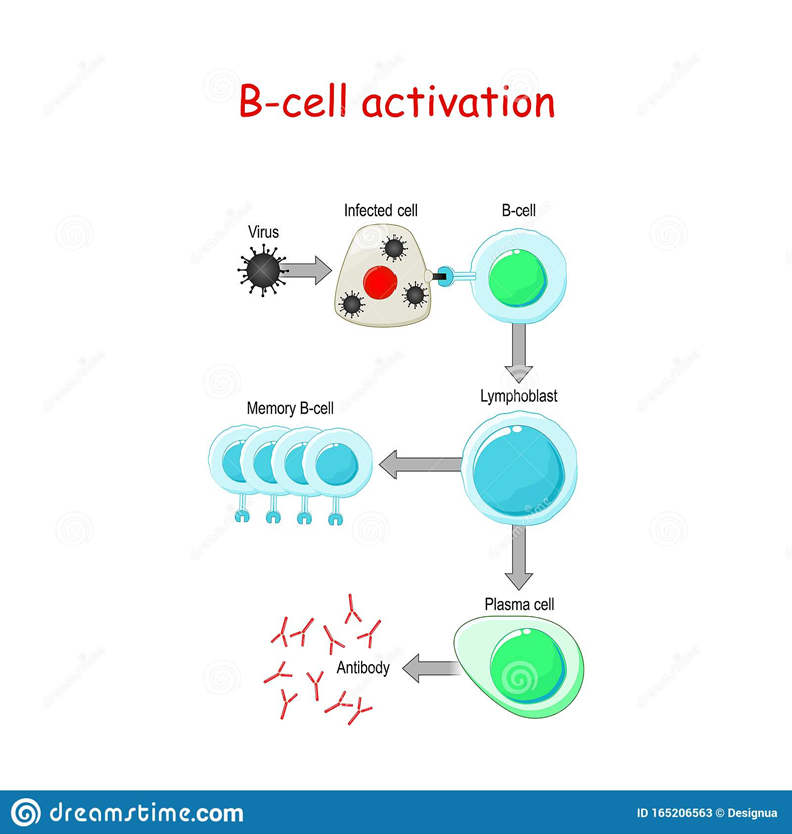
Role of Antibodies - receptors & effectors
Antibodies are assembled out of protein chains
There are many different chains that the immune system assembles in different ways to make different antibodie
Antibodies may disable some microbes, or cause them to stick together (agglutinate)
They "tag" microbes so that the microbes are quickly recognised by various white blood cells
Antibodies released into the blood stream will bind to the antigens that they are specific for
Antibodies as Receptors:
Antibodies can attach to B cells and serve to recognise foreign antigens
Antigens as Effectors:
Free antibodies can bind to antigens, which "tags" to the antigen for the immune system to attack and destroy
Helper T cell
Helper T-cells have receptors for recognizing antigens
If they are presented with an antigen, they release cytokines to stimulate B-cell division
The helper T-cell is the key cell to signal an immune response
If helper T-cells are disabled, as they are in people with aids, the immune system will not respond
Cytotoxic T cells (“Killer” T cells)
While B-cells divide and differentiate, so do T-cells
Some T-cells become cytotoxic, or “killer” T-cells
These T-cells seek out and destroy any antigens in the system, and destroy microbes “tagged” by antibodies
Some cytotoxic T-cells can recognize and destroy cancer cells
Calling a halt
When the invader is destroyed, the helper T-cell calls a halt to the immune response
Memory T-cells are formed, which can quickly divide and produce cytotoxic T-cells to quickly fight off the invader if it is encountered again in the future
State the difference between bacteriostatic and bactericidal
Bacteriostatic: antibiotics that inhibit bacterial growth
Bactericidal: antibiotics that kill bacteria
State the difference between broad and narrow spectrum antibiotics
Broad spectrum: target many types of bacteria; taken to prevent possible infection after a person has had an operation, or before the species of bacteria has been determined
Narrow spectrum: target only a few types of bacteria; taken usually when antibiotic resistance bacteria is present/the exact species of bacteria has been determined of the infection
Describe how antibiotic resistance can be transferred by vertical or horizontal gene transfer
Horizontal evolution (gene transfer):
Conjugation: resistance genes can be transferred between bacteria of the same or different species (join together, one donates plasmid)
Transduction: resistance genes are transferred from one bacteria to another through viral phage
Transformation: resistance genes from live or dead bacteria are picked up by another
Vertical evolution:
Resistance traits are inherited from one generation to another (binary fission)
Bacteria undergoing binary fission and over generations, mutations can occur
Mutations may be advantageous for bacteria